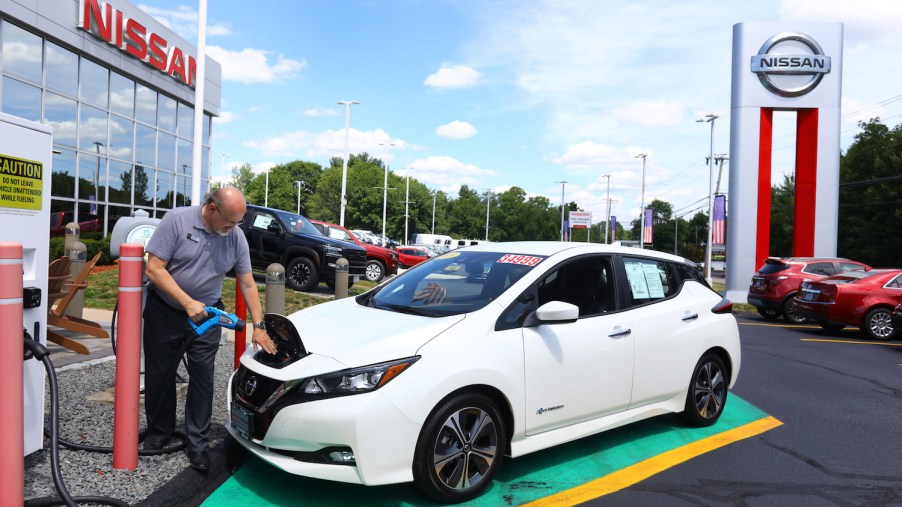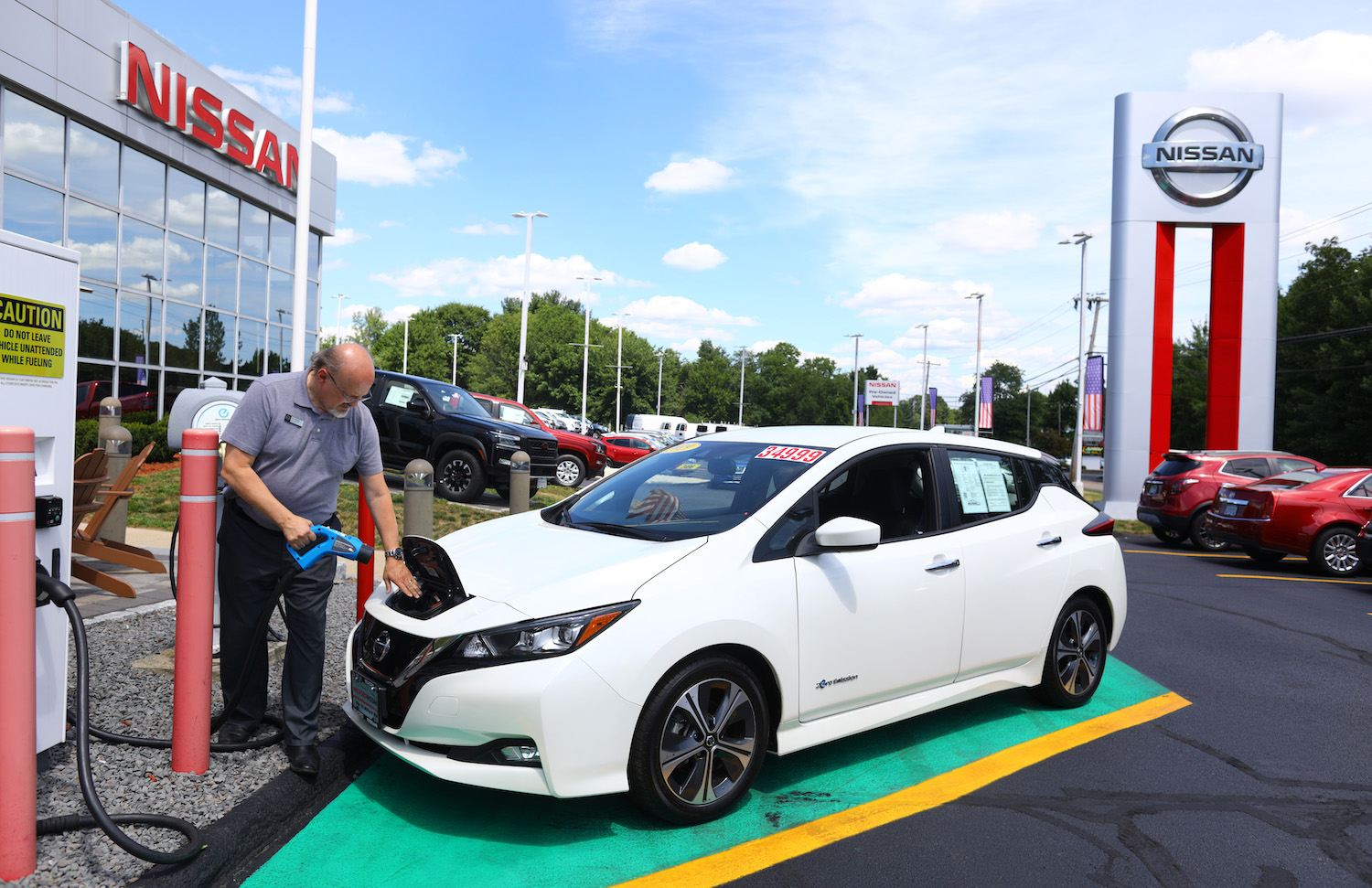
How Much Is the 2023 EV Tax Credit?
I have some good news: the federal government is expanding its EV tax credit to include every automaker, no matter how many EVs they have sold. It also now includes used Ev purchases. Finally, dealerships can buy the credit from you, effectively just lowing the price of the vehicle instead of forcing you to wait until tax season to see your money. But I have some bad news, too: the new law is increasingly complicated as the government fiddles with which vehicles it applies to.
How much is the 2023 EV tax credit?
The new law offers two $3,750 tax credits for new EV purchases. Various EVs may qualify for one, both, or neither. This law also offers an additional $4,000 tax credit for the first resale of certain EVs–when done through a used car dealership.

The only EVs eligible for either credit are cars with an MSRP of $55,000 or less and SUVs/trucks/vans with an MSRP of $80,000 or less. To qualify for the used EV tax credit, a vehicle must resell for $25,000 or less. So you won’t be getting a tax break after you buy that Rimac supercar.
Which vehicles qualify for the 2023 EV tax credit?
For the first time, you may be able to qualify for the credit when you buy a used EV. That’s a major step forward for sustainability. New vehicles must be assembled in the U.S. and other qualifications are based on how the automaker is sourcing its materials.

Why is the 2023 EV tax credit broken into two chunks? Because not every vehicle will qualify for both. Here’s the deal, you can get that first $3,750 if 40% of the battery materials in your new EV come from the U.S. or any country we have a free trade agreement with. You get that second chunk of change if 50% of its battery components come from one of the above countries.
I won’t list all the countries here, but it certainly doesn’t include every lithium producer. Therefore, we’ll have to wait and see which manufacturers can source their batteries from qualifying countries by 2023.
How do you get the 2023 EV tax credit?
To get the EV tax credit you must purchase a qualifying EV. Then when you file your taxes, you apply for said credit. You can deduct the taxes from whatever you owe. If you don’t owe the full credit, you can’t roll over the remainder to the next year.

There are a few downsides to this system. You have to find a way to buy or finance an EV without any help from said credit. The credit you get also may be limited by the taxes you owe–according to Clean Technica.
If you only owe a few thousand dollars, it doesn’t matter if your purchase qualifies for the full $7,500–you’re not going to see that money. Because the credit is limited to people making $75,000 or less–or households making $112,500 or less–most of the people who qualify might not owe that much in taxes.
But things will be changing for 2024. In the future, the EV tax credit will be applicable at the point of sale. What’s this mean? You can simply transfer this tax credit to the dealership, then it can lower your buying price and write the credit off in its taxes.
This new point of sale rebate will not even be dependent on how much you owe in taxes: everybody will be able to claim the same amount and lower the cost of their new EV by that much.
Next, find out how much it will cost to replace your EV battery or learn more about the changing EV tax credit in the video below:



